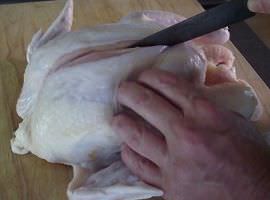Ethical And Sustainable Grass Fed Meat
Grass Fed Meat Is Better For You The Animals And The Environment
I eat meat and fish, I do. When I buy meat whether it's beef, pork, poultry, game or fish, I buy grass fed meat from stores that are committed to ethical and sustainable farming practices. I don't think there is anything wrong with eating animals as long as it is done with compassion, care, respect and dignity.
When I was in culinary school, in Italy, we went on field trips to commercial farms where cows were raised for milk production to make cheese, cows were raised for beef, pigs were raised for prosciutto, as well as trips to various vineyards. You know what I didn't see during any of those trips, the use of chemicals on the grapes, antibiotics for the animals, or any cruelty toward the animals. Not once, in any capacity. What I did see was a healthy respect for the animals and the environment.
In Italian the word "tipico", pronounced tee-peko, literally means "typical" in English, but it means so much more for the Italians. They use the word to talk about the nature of any given region, and through its use they seem to somehow connect with the region. But then, their language, culture, and cuisine are inextricably woven together. Frankly, the whole notion is something we seem to have lost long ago, if we ever had it.
That's not to say I haven't seen cruelty anywhere else, but there seems to be a huge difference in the kind of cruelty. In Central America, on some of the islands they have a real problem with feral dogs. When the population of dogs gets out of control they buy and poison hot dogs and put them out. The dogs eat them and die. But you know what the difference is, they don't run around beating and torturing the dogs beforehand.
The point is, the overwhelmingly cruel, heartless, inhumane, and abysmal treatment of animals in production farms in the US does not need to happen and from what I have seen of the world it appears to be a uniquely American phenomenon. Interestingly, this isn't a new or relatively new phenomenon, Upton Sinclair wrote about this in his book, The Jungle, in 1906. What does that say about us?
 NY Strip Steak: Organic Grass Fed Meat
NY Strip Steak: Organic Grass Fed MeatSo, if you're going to eat meat, buy grass fed meat that is produced ethically and sustainably, It's better for the animals, better for the environment, and better for you. Not only that, it's so expensive that you won't be able to eat it as often. You'll have to eat more vegetables, fruits, and grains which makes it even better for you.
If you would like to see an example of ethical and sustainable farming check out Dan Barber Foie Gras.
How To Butcher A Chicken

It seems one of the most forgotten kitchen skills out there, is butchering or breaking down beef, lamb, pork, fish, and poultry. That's a real shame because butchery is relatively easy to do and it saves you money at the store.
Once you get the hang of it, it is quick and easy to do. Not only that it is downright fun. I love to butcher. You take a whole bird and fabricate it into useable pieces, there is a lot of satisfaction in doing that, at least for me.
How To Cook Steaks
 Rare Grass Fed NY Steak
Rare Grass Fed NY SteakProbably the most important and most often overlooked step in cooking any proteins is bringing them to room temperature before you begin cooking. The warmer the meat is when you start cooking, the less time it takes to cook through.
Is there a right a way to cook steak? Well, it depends on what you want. The very best possible way to cook it is to put it over the heat, sear it for one minute, turn it over, sear it for one minute, turn it over, one minute, turn it over...until you reach your desired degree of doneness, turning every minute. Cooking a steak this way ensures an even degree of doneness, better texture, and a moister finished product.
Meat Temperatures

You no doubt have heard people say you can tell the temperature by the feel of the meat. You can after a while, but each cut of meat is slightly different and the feel at a particular temperature is different.
Cooking times for meat: I wish I could tell you that it takes a specific number of minutes to hit rare or medium-rare, or well done, but I can't. Meat cooking times are a guideline at best and it takes trial and error to hit your desired temperature.
Roughly it takes; 2 to 5 minutes on each side for rare, 4 to 6 minutes per side for medium-rare, 5 to 7 minutes per side for medium, 6 to 8 minutes per side for medium-well, and 7 to 10 minutes per side for well done. Again, this depends on the thickness of the meat, temperature of the grill or pan...etc.
More about meat cooking temperatures.
USDA Beef Grades
 Grass Fed Chuck Roast
Grass Fed Chuck RoastIs your beef prime, choice, or select?
Beef grades are based on the amount of marbling in the meat. Marbling is the streaks of fat you find distributed throughout the meat. The higher the grade of beef the more tender, juicy, and flavorful the meat will be.
The Case For Grinding Your Own Grass Fed Ground Beef

Food handling practices in commercial slaughterhouses are abysmal. So far, in 2015 there have been twenty beef recalls from ten different distribution firms, and in 2014 there were 57 recalls. That's a whole lot of meat. Often the suspect product is ground meat. Why you ask, often during slaughter the intestinal contents is spilled onto the meat. Then the meat and all of those contaminants are ground together.
However, grinding your own meat avoids these problems, along with many others. Grinding meat is easy once you get the hang of it and it gives you beautiful vibrant red ground beef with fat that is dispersed evenly throughout the meat with no emulsification.
When the meat cooks that solid fat is going to start melting and it is going to lubricate the interior of the meat, providing a moist burger, a pleasant mouth feel, and faster satiety. That's the hallmark of a great burger.
Learn how to grind your own meat.
Tags: grass fed meat, how to cook steak, meat temperatures, grass fed ground beef




